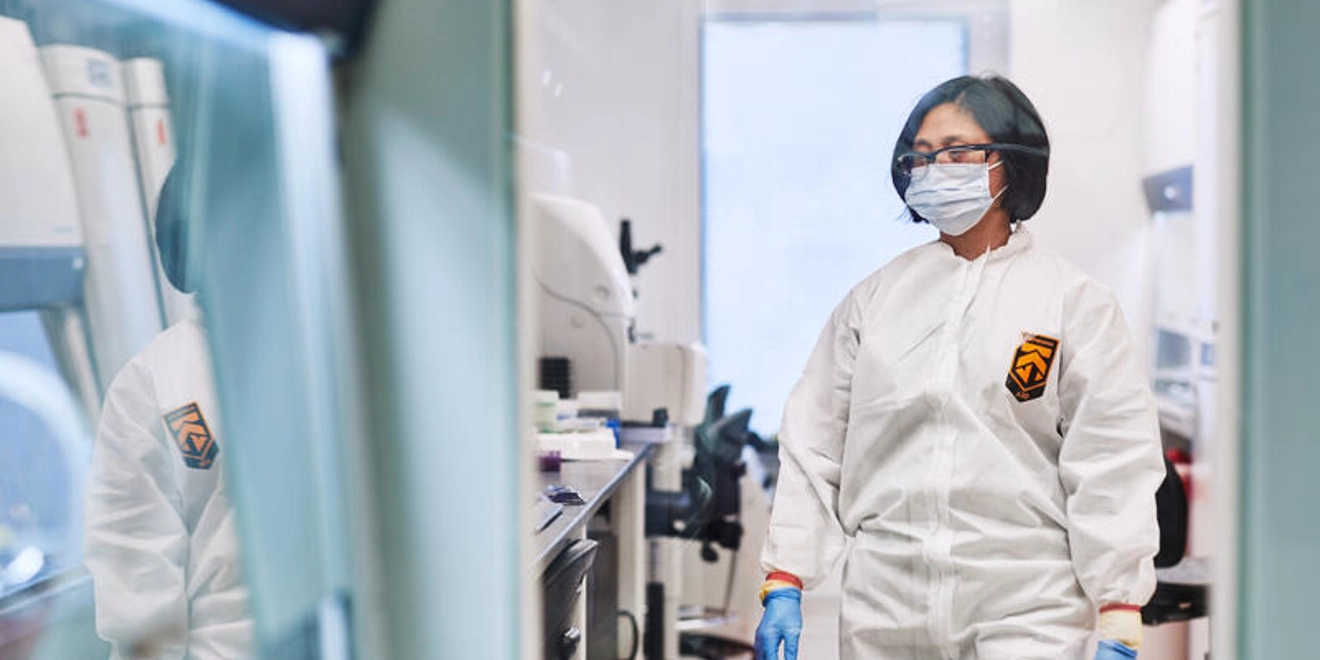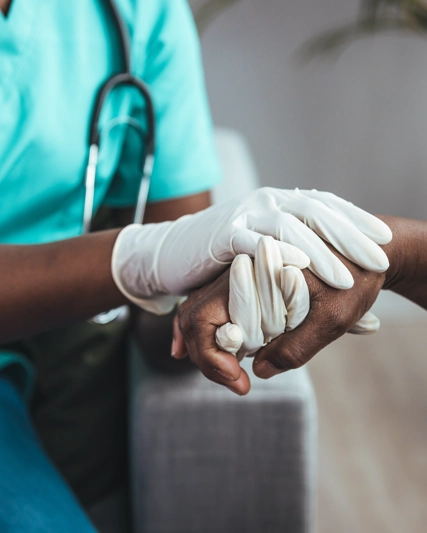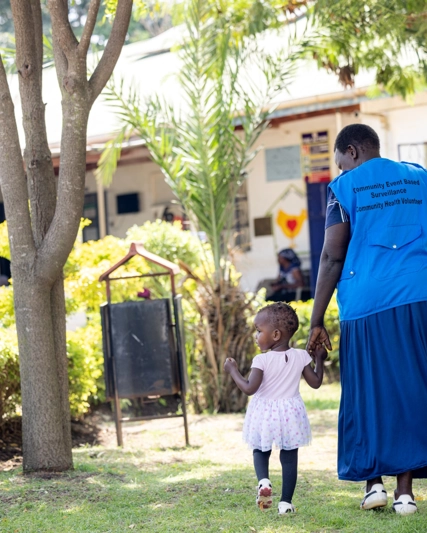In this Behind the Science series on the power of prevention, we explore what it means to change the course of disease through prevention and earlier intervention. Here, scientists and advocates at the forefront of the race to end the HIV/AIDS epidemic by 2030 reflect on how far prevention can take us in reaching that ambition.
Almost a decade ago in her London clinic, Dr Nneka Nwokolo cared for a patient who refused HIV treatment, despite its potential to transform her life.
“Margaret* had been diagnosed with HIV long before I met her and was already very unwell,” recalls Dr Nwokolo. “She was constantly tired with no energy.”
Even as her health deteriorated, Margaret continued to decline the treatment offered to her.
“She held strong religious beliefs and as a result simply didn’t believe in the treatment. I offered her a chance to meet with other people in a similar situation – but nothing would change her mind.”
A year later, Margaret passed away.
“I was overwhelmed by thoughts of how unnecessary her death was,” says Dr Nwokolo.
“If Margaret had had access to an effective form of [HIV] prevention, she would not have died.”
Margaret’s story shows just how far the world has come in the race to end the HIV epidemic, and yet how far it still has to go.
The virus was first discovered in 1981, and for years afterwards, diagnosis was often a death sentence. Since then, scientific advances have transformed the prospects of people living with HIV by making it a chronic, manageable condition, and provided greater protection for those who could be exposed to HIV.
However, discrimination and stigma, including stigma that people with HIV can feel about themselves, remain rife – as Margaret experienced, contributing to her refusing treatment. Funding and access to prevention and treatment remains a global challenge, and as such, rates of HIV remain stubbornly high: there are around 1 million new HIV diagnoses every year. In 2022, 630,000 people died of HIV-related illnesses worldwide.
To counter this, the United Nations has set an ambitious goal to end AIDS as a public health threat by 2030 with the aim of reducing the number of new cases to as close to zero as possible. But what are the chances of achieving this goal – and how could better access to effective prevention help to end the HIV epidemic?

‘Prevention is key’
“There are three things necessary to ending the HIV/AIDS epidemic,” says Dr Nwokolo, who is Head of Global Patient Engagement for ViiV Healthcare, GSK’s specialist HIV company, alongside continuing to work as a doctor in London.
“One is to test everybody so that you identify people living with HIV. Second is to treat people who you find have HIV. And third is to prevent HIV from occurring in people who don’t have it. You cannot end HIV without all of them, and prevention is key.”
Prevention of HIV can take many forms. It can include condoms and conversations with a new partner before sex to understand someone’s HIV status and testing history. And can also include biomedical options, as Alex Rinehart, Medicine Development Lead, Prevention at ViiV Healthcare, explains:
“The whole idea is to prevent transmission of the virus. There are two ways that you can do that. The first is to take somebody who’s already living with HIV and treat them to drive down the amount of virus in their blood to undetectable levels. At that point, they’re not able to transmit the virus to anybody else.” This concept of treatment as prevention is known as undetectable = untransmissible, or U=U.
“The other side of the equation is called HIV pre-exposure prophylaxis, or PrEP,” Rinehart continues. “So that’s when you take people who are at risk of acquiring HIV, and you offer them a medication that dramatically reduces their chances of acquiring HIV if they were exposed to it.”
ViiV Healthcare has been at the forefront of innovation in HIV prevention, developing alternative methods of administering preventative medicines that can offer people additional choice to suit their individual circumstances, as well as treatment regimens that mean people living with HIV can take fewer drugs.
But innovation in prevention and treatment is only meaningful if it is relevant to, and ultimately reaches, the people who need it.
“We have interventions that are shifting the paradigm for how [HIV] medicines are delivered,” Rinehart says. “So now, the real innovation comes from implementation science.”
Breaking down barriers
People face multiple barriers to accessing preventative healthcare. Therefore, any implementation programme designed to deliver new interventions and treatments must consider how to remove these barriers to be effective.
Funding is one significant barrier, with spending on HIV prevention failing to keep pace with investment in other areas of the response. UNAIDS estimates that investments in primary prevention of HIV need to double from $5.3 billion in 2019 to $9.5 billion in 2025.
HIV prevention efforts are also hindered by a complex web of inequalities that disproportionately affect communities and populations who experience sexism, racism, homophobia, transphobia and biphobia, as well as other forms of discrimination. These inequalities are compounded by social determinants that widen health disparities, from education to income.
All these factors can leave people unable to have open conversations with their partners, health practitioners or communities about HIV, and unable to access services that would protect their health.
“The biomedical products, like PrEP, only work if you address the structural and social issues and that's our biggest problem in prevention,” says Mitchell Warren, executive director of AVAC – a non-profit organisation that advocates for equitable access to prevention innovation in HIV.
“We need to reach young women who are at risk of exposure having sex,” he adds. “We also need to reach gay men and other men who have sex with men (MSM), transgender individuals and people who use drugs.”
But gender norms in many cultures and taboos about sexuality can hinder young women seeking HIV prevention options. In 2022, 46% of all new HIV infections globally were among women and girls. And MSM and trans individuals are still criminalised and stigmatised in some communities.
Every country around the world has at least one law which criminalises same-sex sexual relations, sex work, drug use, or either HIV exposure or transmission. These legal barriers continue to fuel stigma and marginalisation, undermining HIV prevention.

People, not pathogens
Success in reducing new HIV infections – the primary outcome of prevention – is therefore patchy. Eastern and Southern Africa have seen significant declines in new infections. But in areas including eastern Europe and central Asia, rates continue to rise.
“While we might not make the 2030 goal, we will come much closer, but it's going to take some very strategic thinking,” Warren says.
“It's going to take partnerships at a higher level than we've seen between communities and governments and funders and companies.
“Prevention is hard. If we can prevent an infection and prevent someone from having to need lifelong care and treatment, we will save money. But that's going to cost some money up front in the next several years.”
Funding and resources are dependent on stronger political will, and governments keeping up the momentum on HIV action. But ultimately, HIV prevention efforts will only be effective if they focus on people, rather than the pathogen – considering the relationships, communities and systems in which people are living and what this means for how they might access care.
ViiV Healthcare has therefore implemented a diverse range of programmes centring individuals and communities to support HIV prevention and treatment at scale. For example, in 2022, ViiV launched the EBONI study, the first HIV trial to focus 100% on Black Women in the United States. Engagement with Black women in the community provided invaluable information on how to reach those most affected.
From community involvement in clinical trial design, ViiV Healthcare also champions programmes like Risks to Reasons that reframe pleasure and self-care as reasons for Black women to engage with HIV prevention. To enable wider access to prevention, ViiV Healthcare has taken steps from agreeing voluntary licences in lower-income countries, to supporting community-based checkpoints for HIV testing, prevention and treatment.
“Success comes when science meets policies and meets communities where they are,” Warren concludes.
“If we can translate biomedical innovation into choices that people can make alongside other preventative options, this could be a golden moment in prevention.”
*not her real name




